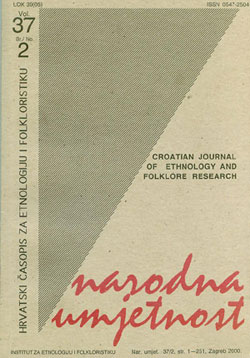Verbalno nasilje i (raz)gradnja kolektivnih identiteta u iskazima ratnih zarobljenika i političkih zatvorenika (1945.-1995.)
Verbal Violence and (De)Construction of Collective Identities in the Accounts of War and Political Prisoners (1945-1995)
Author(s): Renata Jambrešić KirinSubject(s): Cultural Essay, Political Essay, Societal Essay
Published by: Institut za etnologiju i folkloristiku
Keywords: political violence; verbal violence; testimonies of torture (1945-1948; 1991-1995); deconstruction of identity
Summary/Abstract: The aim of this paper is to demonstrate how recent public interest in testimonies of war prisoners after WWII and political prisoners of the former Yugoslav Republic of Croatia reveals the salient politicization of public memory as adjustable to the concurrent socio- -ideological values. On one level, I emphasize how individual selective processes of memorizing and forgetting are guided by the strategy of alternation which is defined by Berger and Luckmann as the "reinterpretation of past biography in toto, following the formula 'Then I thought..., now I know...' ". On another level, I indicate how the positive attempt to "reconcile" all members of the Croatian socio-political body at the beginning of the 1991 war — by turning the popular Christian imaginary of national victimization into the imaginary of a long and legitimate struggle for independence — was infiltrated by the right wing's restraints on historical knowledge. However, my first sociolinguistic and ethnological aim was to clarify the frequent use of the same offensive names for the opponents in the recent war, the same examples of verbal violence as a means of identity destruction, the similar methods of torture recounted by recent war prisoners as those depicted in memoirs of political prisoners in former Yugoslav "camps for rehabilitation". The same repertoire of hate speech is revealed in reminiscences of non-partisan Croatian combatants and civilians who were part of communist rulers' ritual humiliation and punishment through "death marches" called the "Crucifixion path" in 1945. They were primarily designed to humiliate prisoners — using shared imaginary and traditional symbolic values — and to clearly "exhibit the crime" on their suffering bodies so that the torturers, together with the witnesses, could "justify the fairness of punishment" (Foucault) as well as the official needs for confinement and permanent surveillance of "state enemies".
Journal: Narodna umjetnost - Hrvatski časopis za etnologiju i folkloristiku
- Issue Year: 37/2000
- Issue No: 2
- Page Range: 181-198
- Page Count: 17
- Language: Croatian

